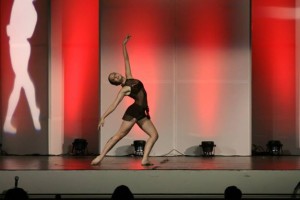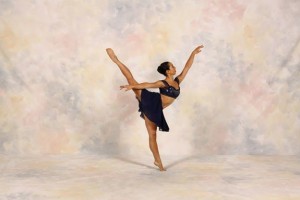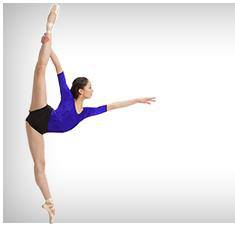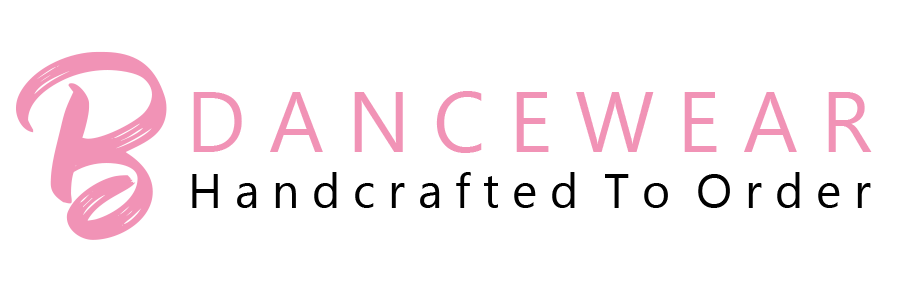 Established in 2012, Bay Area Dance School is dedicated to maintaining excellence in dance education and welcomes young dancers to learn and enjoy the art of dance through various styles and levels of instruction. They build upon these styles and levels to support a young child’s learning pattern and growing body.
Established in 2012, Bay Area Dance School is dedicated to maintaining excellence in dance education and welcomes young dancers to learn and enjoy the art of dance through various styles and levels of instruction. They build upon these styles and levels to support a young child’s learning pattern and growing body.
Leyla Boissonnade is the Studio Owner and Director of Bay Area Dance School in Los Altos, California. Bay Area nurtures young dancers and fosters their passion for dance through high-quality dance instruction with an emphasis on technique and attention to details. They offer ballet, pointe, jazz, lyrical, tap, contemporary, acro, pre-school, boys and conditioning classes, as well as Acuity, their competition team.
Acuity Dancers is Bay Area’s competition team program designed for serious dancers who are committed to the art of dance and who have a passion to perform. Participation is by invitation and audition only. As part of the program, students will participate in technique classes, performances, competitions, conventions, community work, workshops,
Bay Area is a studio for young dancers who are serious about their dancing but still want to explore other interests as part of their childhood. Leyla believes it is important for dancers, especially those under the age of 12, to try other physical activities (swimming, soccer, gymnastics, etc.) and creative talents (writing, singing, acting, etc.). Not only do the other activities help the students cross-train their dance skills by developing performance quality, musicality, and physical conditioning, but a lighter dance schedule can foster emotional maturity by ensuring the growing dancers don’t feel restricted or confined by their dance schedule. That being said, their classes are very structured and require the students to focus and respect dance as a discipline. Additionally, they require a dress code, punctuality, and strong attendance. But, they also want their dancers to engage in imaginative play, choreography games, and performances.
Bay Area stands out from other studios in that they strive for their students to learn clean technique, facility of the body, beautiful carriage of the torso and arms, and a genuine love for performing. All of their dancers are encouraged to take ballet classes, which is the foundation of their competition team. They build upon ballet to teach other styles in all levels to support a young dancer’s learning pattern and growing body. Leyla believe that the combination of practice, dedication, passion, and skill allows a dancer to safely build the strong technical skills necessary to improve and progress, regardless of whether they want to pursue dance as a profession or just because they love it!
 Their children’s curriculum is based on properly learning the fundamentals of each style of dance in an age-appropriate way. For example, no children are forced to turnout on a straight line, even if their anatomy allows for it, until they are old enough to understand that turnout is the rotation of the legs and mostly comes from the hips. Although they stress the importance of flexibility and strength training to their pre-teens, especially their competition dancers, they do not force students into hyperextended positions or demand hundreds of poorly executed sit-ups. I’ve seen too many young bodies pushed into contorted positions and also overdeveloping muscles at a young age. Some will develop devastating injuries during adolescence, which can lead to depression and lack of self-motivation for a child whose world revolves around dance. Leyla wants all of their students to safely practice what they love, even if it means not being able to tilt behind their heads, perform doubles on pointe, or do a whip back by the age of twelve.
Their children’s curriculum is based on properly learning the fundamentals of each style of dance in an age-appropriate way. For example, no children are forced to turnout on a straight line, even if their anatomy allows for it, until they are old enough to understand that turnout is the rotation of the legs and mostly comes from the hips. Although they stress the importance of flexibility and strength training to their pre-teens, especially their competition dancers, they do not force students into hyperextended positions or demand hundreds of poorly executed sit-ups. I’ve seen too many young bodies pushed into contorted positions and also overdeveloping muscles at a young age. Some will develop devastating injuries during adolescence, which can lead to depression and lack of self-motivation for a child whose world revolves around dance. Leyla wants all of their students to safely practice what they love, even if it means not being able to tilt behind their heads, perform doubles on pointe, or do a whip back by the age of twelve.
Bay Area’s high school competition team is unique because the students are required to perform community service, write journal reflections, and participate in workshops about teaching, choreography, acting, etc. In addition, they receive college application counseling and summer program audition help. Their graduating seniors sit down together to work on their college essays, organize audition reels, and proofread resumes. Being able to communicate in writing and present yourself in an organized and professional manner are important skills for any dancer entering the professional dance world or higher education.
Shortly before Bay Area opened its doors, the Los Altos Town Crier ran an article about Bay Area Dance School that reads, in part, “Leyla Boissonnade’s philosophy is that good dancers should think as well on their feet as in the classroom. With a plan to combine dance and academics, Boissonnade is scheduled next month to officially open Bay Area Dance School . . . Boissonnade’s studio will offer dance lessons, of course, but also academic, college prep and SAT support. ‘I want to make a place (at the studio) for kids to do homework,’ she said, adding that she plans to provide her students with academic tutors. ‘I want to make an environment based on learning and achievement.’” This is definitely separates Bay Area Dance School from other studios.
Leyla finds it tough to come up with a moment that she would consider her proudest moment during her coaching career. She is not easily impressed (as supposedly her students can tell you) but she is always proud of them! She knows people talk about how this generation is unmotivated, self-indulgent, and focused on instant anything, but she is honestly impressed by how dedicated her students are because they chose to dance when there are so many other things they could be doing. She has had students receive national titles, such as Dance Masters of America’s Miss Dance 2015, dance at internationally recognized dance programs, and pursue a professional dance careers, but the real awards are the journeys they took to get there. Leyla is proudest of her students who come back after quitting, after losing, after forgetting choreography or falling on stage; dance is a live art and requires the maturity to apply critiques, struggle through personal challenges and accept personal failure. She is also very proud when her babies learn how to skip!
It is also hard to think of the “biggest” mistakes she sees dancers make, but she did express the following:
Dancers need to remember the importance of how they present themselves. This includes how they enter and exit the stage (confidently and with clear stage directions), their grooming (neat hair, costume pieces, personal grooming), the consistency of their technique and tricks (pointed toes and stretched legs are a must!), the intentions behind the movements (a prep is used to initiate movement and shouldn’t stop the flow of choreography), and the purpose of the performance (a good performer should hold the audience’s attention and tell a story).
 Leyla asked her students three main questions when they are getting ready for competition: 1) “If you were in the audience and watching this dance, what parts of the performance would stick out to you (both positively and negatively)?” 2) What message, feeling, or story do you want the audience to be left with? 3) Can you make the audience fall in love with you? According to Leyla, this last question seems to puzzle dancers the most. She believes the audience falls in love with dancers on stage because of their technical prowess, their ability to stir an audience’s emotions, to entertain and energize a crowd, or just because they transcend reality by what they can do with their bodies. It’s why they all have their favorite dancers on So You Think You Can Dance, in dance companies, or just that older girl they always looked up to. They make dance enjoyable to watch.
Leyla asked her students three main questions when they are getting ready for competition: 1) “If you were in the audience and watching this dance, what parts of the performance would stick out to you (both positively and negatively)?” 2) What message, feeling, or story do you want the audience to be left with? 3) Can you make the audience fall in love with you? According to Leyla, this last question seems to puzzle dancers the most. She believes the audience falls in love with dancers on stage because of their technical prowess, their ability to stir an audience’s emotions, to entertain and energize a crowd, or just because they transcend reality by what they can do with their bodies. It’s why they all have their favorite dancers on So You Think You Can Dance, in dance companies, or just that older girl they always looked up to. They make dance enjoyable to watch.
Dancers also need to use their imaginations when they dance. It’s not enough to just execute movements and choreography without really getting into the character. Dancers can forget to interact with each other, the audience, and their props/scenery. But the audiences still notices. Leyla also thinks “tricks” need to be practiced but never preached as “necessary”. Young dancers virtually worship their peers who post 20 turns or fold in half but Leyla worries that those young dancers fail at developing their dancing as an art form if they don’t also watch professional performers. Lastly, the hyper-sexualization of young dancers just needs to stop. They must celebrate bodies and build confidence but young dancers need to feel that they also have a say in what they are comfortable wearing or executing on stage.
Bay Area Dance School is a one-room studio with less a hundred students. Leyla’s goal is to expand to another location at the end of this year so they can offer more classes and build their pre-school program.
Bay Area Dance School is located in Silicon Valley, only minutes away from Stanford University. As a result, the academic pressure to “overachieve” is very intense. Parents are also concerned about raising their children in a competitive environment. Leyla opened Bay Area because she wanted to insure that any student who devoted 20+ hours a week to dance classes and rehearsals would be able to support his or her decision to commit to the competition team during the hectic high school years. Unlike team sports or academic competitions, dance isn’t often viewed by parents as an activity that leads to a “future.” She wanted to help students, parents, educators and college counselors understand that dance can offer college scholarships, internships, job experience, community service opportunities, leadership involvement, multi-disciplinary learning, team participation, as well as develop critical reasoning, problem solving skills, discipline, and the maturity to handle disappointments. She is proud of this program and hope it continues to grow and grow.
Please post a comment if you have had any experience with Bay Area Dance School or Leyla Boissonnade.
If you would like to know more about Bay Area Dance School, check them out on their website at www.bayareadances.com. Also, you can call them at 650-472-2214 or email them at info@bayareadances.com and don’t forget to “Like” them on Facebook.
